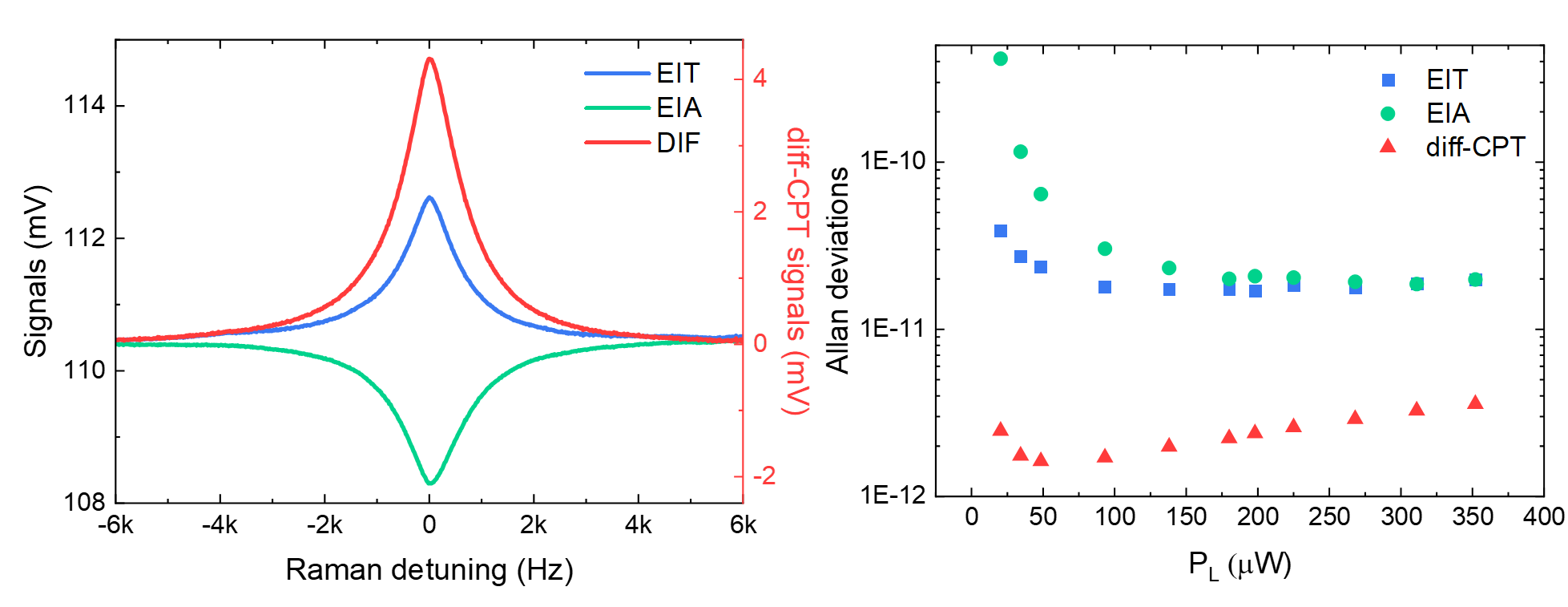A research group from the National Time Service Center(NTSC) of the Chinese Academy of Science (CAS) proposed a miniaturized "perfect difference" CPT atomic clock. The research shows that the coexisted electromagnetically induced transparency (EIT) and absorption (EIA) of clock transition signals in the new scheme, and the signal-to-noise ratio of differential CPT signals is greatly improved with a high-quality factor, which provides a feasible way to implement compact and high-performance CPT atomic clocks.

Fig. 1. CPT atomic clock configuration, (left) previous "perfect difference" configuration; (right) miniaturized "perfect difference" configuration.
"The ‘perfect differential’ CPT atomic clock based on the push-pull configuration proposed by this group (Fig. 1, left) has encouraging potential of short-term frequency stability, but the system is complicated and difficult to miniaturization," said Prof. YUN, the leader of this research group.
To solve this problem, scientist further proposed innovative configurations to achieve miniaturized high-performance CPT atomic clocks. In this scheme, the pump and probe light propagate in opposite directions and interact with atoms to produce a quantum resonance in which EIT and EIA coexist, and the difference-CPT (diff-CPT) signal can be obtained by detecting transmitted light with balanced detectors.

Fig. 2. the "perfect difference" clock transition signal and expected frequency stability. (left) EIT (blue), EIA (green) and differential signals (red) observed in the new configuration; (right) expected frequency stability.
Scientists successfully observed mirrored symmetric EIT and EIA resonance signals (as shown in Fig. 2(left)). The key of this experiment is noise suppression, and compared with EIT or EIA, the observed signal-to-noise ratio of the proposed method’s diff-CPT signal improved by one order of magnitude.
Compared to CPT atomic clocks based on EIT or EIA alone, the new method is expected to improve short-term stability by an order of magnitude, i.e., to the level of 1.6E-12 at one second (as shown in Fig. 2(right)).
The scheme retains the main advantages of "perfect differential" CPT, namely, the increase in CPT amplitude and the significant suppression in the common mode noise of the system, while the system is greatly simplified.
"This work paves the way to implement miniaturized high-performance CPT atomic clocks, which would be the core of various applications that require precise timing while sensitive to the size, weight and power consumption, such as nanosatellites, drones, underwater vehicles, micro PNT and so on," said Prof. YUN.
The study was published in the New Journal of Physics entitled "Noise suppression by differential detection of simultaneous electromagnetically induced transparency and absorption in counterpropagating bichromatic light".
CONTACT:
XIONG Tiantian
National Time Service Center, Chinese Academy of Sciences
gjhz@ntsc.ac.cn
 Print
Print